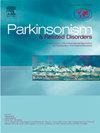持续皮下输注治疗帕金森病:有效性和安全性的证据。
IF 3.4
3区 医学
Q2 CLINICAL NEUROLOGY
引用次数: 0
摘要
持续的多巴胺能药物递送旨在减少帕金森病(PD)的运动波动。虽然肠内左旋多巴输注有效,但需要胃空肠管插入。相比之下,皮下(SC)输注的侵入性较小。最近foslevodopa输注的引入重新引起了对SC治疗的兴趣。我们回顾了目前持续SC输注阿波啡和左旋多巴制剂的证据。阿波啡在临床上已经使用了几十年。TOLEDO研究是第一个阿波啡输注的随机、安慰剂对照试验,它证明了在没有麻烦的运动障碍的情况下,关闭时间显著减少,打开时间显著增加。长期开放标签研究证实了持续的益处和相对较好的神经精神耐受性,冲动控制障碍的发生率较低,可能是由于其多巴胺受体谱。Foslevodopa/foscarbidopa是第一个也是目前唯一一个被批准的基于左旋多巴的SC制剂;另一项研究的数据来自随机试验。这些药物在减少OFF时间和提高良好ON时间方面的效果与阿波啡相似。皮下治疗通常会引起皮肤反应,目前尚不清楚foslevodopa和apomorphine的长期耐受性是否不同。皮下阿波啡、左旋多巴和左旋多巴对运动波动的患者都有明显的疗效。所有这些都可以全天候使用,尽管这种用法是foslevodopa的标准用法。副作用和禁忌症各不相同,但它们都具有易于逆转的优点。虽然关于24小时治疗的最佳策略、长期依从性和耐受性的问题仍然存在,但SC输注提供了有意义的改善,应该尽早考虑,一旦波动难以口服控制。本文章由计算机程序翻译,如有差异,请以英文原文为准。
Continuous subcutaneous infusion therapies in Parkinson's disease: evidence of efficacy and safety
Continuous dopaminergic drug delivery aims to reduce motor fluctuations in Parkinson's disease (PD). While intestinal levodopa infusions are effecacious, they require gastrojejunal tube insertion. In contrast, subcutaneous (SC) infusions are less invasive. The recent introduction of foslevodopa infusion has renewed interest in SC treatments.
We review the current evidence for continuous SC infusion of apomorphine and levodopa-based formulations. Apomorphine has been used clinically for decades. The TOLEDO study, the first randomized, placebo-controlled trial of apomorphine infusion, demonstrated significant reductions in OFF time and increases in ON time without troublesome dyskinesia. Long-term open-label studies confirmed sustained benefits and relatively good neuropsychiatric tolerability, with low rates of impulse control disorders, likely due to its dopamine receptor profile. Foslevodopa/foscarbidopa is the first – and currently the only - levodopa-based SC formulation to have been approved; another has data from randomized trials. These showed similar efficacy to apomorphine in reducing OFF time and improving good ON time. Subcutaneous treatments commonly induce skin reactions, and it is not yet known whether long term tolerability differs between foslevodopa and apomorphine. Subcutaneous apomorphine, foslevodopa and levodopa all offer substantial benefits for patients with motor fluctuations. All can be used around the clock, although this use is standard with foslevodopa. Side effect profiles and contraindications differ but they all share the advantage of being easily reversible. While questions around optimal strategies for 24h treatment and long-term adherence and tolerability remain, SC infusions offer meaningful improvements and should be considered earlier, as soon as fluctuations become difficult to manage orally.
求助全文
通过发布文献求助,成功后即可免费获取论文全文。
去求助
来源期刊

Parkinsonism & related disorders
医学-临床神经学
CiteScore
6.20
自引率
4.90%
发文量
292
审稿时长
39 days
期刊介绍:
Parkinsonism & Related Disorders publishes the results of basic and clinical research contributing to the understanding, diagnosis and treatment of all neurodegenerative syndromes in which Parkinsonism, Essential Tremor or related movement disorders may be a feature. Regular features will include: Review Articles, Point of View articles, Full-length Articles, Short Communications, Case Reports and Letter to the Editor.
 求助内容:
求助内容: 应助结果提醒方式:
应助结果提醒方式:


